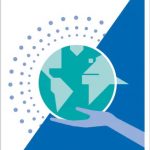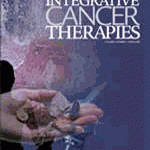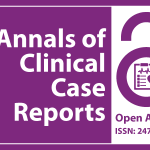Person-centered medicine

In Europe there are 328 000 registered providers of complementary and alternative medicine, traditional medicine or non-conventional medicine (CAM, TM or NCM): 178 000 are non-medical practitioners and 150 000 are medical doctors (MDs). This means up to 65 CAM, TM or NCM providers (35 non-medical practitioners and 30 MDs) per 100 000 inhabitants, compared to the EU figures for general medical practitioners (GPs), of 95 per 100 000 inhabitants. 65% of European citizens report use of CAM, NCM or TM at some point in their lives. Three out of four Europeans know about homeopathy and 29% of them use it for their own healthcare. In 2010, the total EU market for homeopathic and anthroposophic medicinal products was €1.035 billion. Research carried out in the Netherlands shows increased patient satisfaction, fewer hospital admissions and fewer prescriptions with subsequent reduced costs by those GPs who practise anthroposophic medicine. On the other hand, in most EU Member States, CAM, TM and NCM are not recognised or regulated by law, there is no reimbursement for consultation or treatments by national health care providers and the availability of the medicinal products is at risk. What draws people to CAM, TM and NCM? Surveys show that people choose these types of medicine, not because they do not appreciate what biomedicine – the dominant medical system in western societies – has to offer, but because they are looking for a more empathetic doctor-patient relationship, better consideration of their individual needs, more participation in the decision-making process, more consideration of psychological and spiritual aspects or more comprehensive treatment strategies. CAM treatments are also aimed at improving health, stimulating self-healing abilities and improving a person’s ability to deal positively with life’s increasing challenges. The main reasons that people choose CAM are its person-centred and salutogenetic approach. In recent years, the scientific debate on CAM, TM and NCM and their interaction with biomedicine has given legitimacy to the increasing demand for this type of medicine. Integrative Medicine (IM) is the term that has been increasingly used to describe the integration of CAM, TM or NCM practices into the dominant health care system. It describes the systematic and thoughtful combination of different therapeutic methods to get to the root of a clinical problem. It was developed around the year 2000 to describe a practice of medicine that reaffirms the importance of the relationship between caregiver and patient, focuses on the whole of medicine, is informed by evidence and makes use of all therapeutic approaches, health care professionals and disciplines to achieve optimal health and healing. This definition of IM does not specifically mention CAM, TM or NCM, but a prior definition specified that the disciplines used to achieve optimal health and healing could be conventional treatments, complementary and alternative treatments, traditional and culture-specific medicines. The major limitation of IM is that it suggests a solution at a practical level without addressing the epistemological issues that need to guide such integration first, whether all forms of CAM should be included in the integration, which criteria should be used for any exclusion. It does not pose any questions about the fundamental epistemological differences in the view of the human being, of health and illness that underlie biomedicine and CAM, TM and NCM. The anthropology that underlies biomedicine considers human beings as the result of physico-chemical processes. Emotions and thoughts are considered the result of such processes. The human being is viewed as a complex machine, the result of the sum of its parts. If a part is damaged, it can be fixed or replaced with no change to the whole. Only those processes that can be measured or calculated can be investigated scientifically. This mechanistic anthropology underlies the unprecedented advances in the fields of surgery, transplants, pharmacological developments and biochemical discoveries. However it lacks the tools to investigate, explain and treat the more complex problems, functional or psychosomatic illnesses that make up the majority of general practice consultations. Patients become increasingly dissatisfied with what they perceive to be a reductionist view that emphasises physical and technical aspects to the neglect of psychosocial and individual, existential issues connected with illness. They wish to be considered as human beings in all their aspects. Doctors and healthcare workers need the epistemological and practical tools to be able to do this. The common element of NCM and TM systems on the other hand, is a holistic anthropology. The human being is considered, investigated and treated as a physical, psychological and spiritual entity. Health and illness are seen as the harmonious or disharmonic interaction between these constantly interacting aspects. Natural phenomena, the relationship between human beings and their environment are investigated in their complexity. Treatment systems are based on the knowledge, skills and practices that restore health and encourage intrinsic self-healing abilities. Respect for the dignity of every person is advocated and responsibility for keeping healthy at individual and community levels is actively promoted. To address the demands of citizens and healthcare workers of the twenty first century, the advances of biomedicine need to be broadened by the epistemological basis and the practical tools of NCM system. This is the Person-Centred Medicine Paradigm. The primary question to ask is who is a human being? How can we provide global care for individual people? The Person, considered in his or her physiological, psychological and spiritual uniqueness becomes central to the therapeutic process. Broadened understanding and listening abilities are the basis for a renewed person-caregiver relationship, based on empathy, compassion and trust. This relationship becomes the guiding principle of the shared decision on the most appropriate therapeutic pathway to choose. This encourages active participation by both the caregiver and the patient improving autonomy and satisfaction. It may reduce the waste associated with defensive practice which stems from fear and mistrust. The question of how to integrate different treatment methods posed by Integrative Medicine is answered as a consequence. Any therapeutic intervention can be chosen, from whatever origin as long as the person and their caregiver decide together it is the most appropriate for that Person, in that given situation. Therapeutic interventions can also be oriented in such a way that overcoming illness may become a meaningful experience in the context of a Person’s biography and lay the foundation for better future health. In order to achieve such Person Centred Medicine, healthcare policy needs to be oriented towards reducing healthcare inequality, promoting health education, and facilitating pluralism in research and medical education. References
by Paolo Roberti di Sarsina, Paola Guadagni and Mauro Alivia







Lascia un commento
Devi essere connesso per inviare un commento.